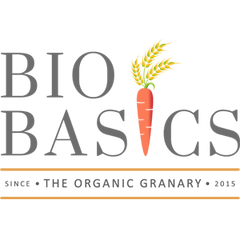But what’s even more surprising? That we “think” we know a lot about our food from “table-to-tummy”. There is a ton of nutrition advice, a dime a dozen, out there. “Antioxidants” someone screams on the reel, or “Flavonoids”! It is almost as if all these folks have actually traced each food and its chemical components from the mouth down to all the organs and know exactly what goes where and how.
Just that this advice changes every 5 years!! IMHO science is still catching up on how it all works from table to tummy, but that is a totally another post! As Michael Pollan says, nutrition science today is where surgery was in 1650 AD. It is evolving. Not there yet. Before you get complicated nutrition advice, ask yourself if you would have liked to go under the scalpel in the year 1650!
But knowing about “farm-to-table” (as opposed to table-to-tummy) is entirely possible, and we should. For we are what we eat. Each morsel that we place in our own mouth can help our health, or hurt it. So know your food. How?

Here are 5 key questions we could ask ourselves to make our food safer for our families.
Farm or factory?
If it is from a farm, great. If not, you need to understand what has gone into it. Study the ingredient label and see if you can identify all that are listed in there. Chances are that you may have to Google all those items on the label, and best not to go there. Maybe in not-that- distant future, we will have to ask ourselves if it is grown on land or in a lab!
Here or there?
If it is grown locally somewhere closeby (within say 100 miles, hence the “100 mile diet”), then you can be assured of many things - its freshness, its short-supply chain, not stored for long, low carbon footprint. But if they are coming all the way from Washington, think how it stays fresh or edible enough after its long arduous journey!
Now or then?
If it is in season, great. Otherwise, think of greenhouses and artificial methods to grow it, along with compromises that go by a chemical name.
With or without?
Do you know if the food has been grown, processed and stored without chemicals. How it is processed - keeping the nutrition intact or taking out the nutrition for the sake of higher shelf life.
In-home or ex-home?
If it has been cooked at your home, superb. Else, find out more, who cooked it, when (reheated after storage at -4 degrees Celsius) and how, using what ingredients (oils and spices).
These are just simple pointers for each of us to dig in deeper into what we eat. No time to do all this due diligence? Too tedious? Feeling out of your depth? Find someone you trust to do it all for you.
Of course, Bio Basics is a nice way out. Not to brag about it myself, but I lean heavily on Bio Basics for almost all my food.
Did I mention we have launched the Bio Basics Carrot Club (our subscription program) recently?
To join the Carrot Club, Click Here.





















































